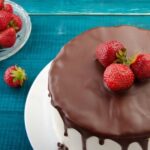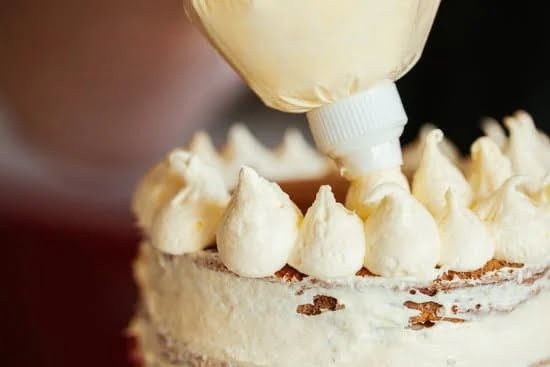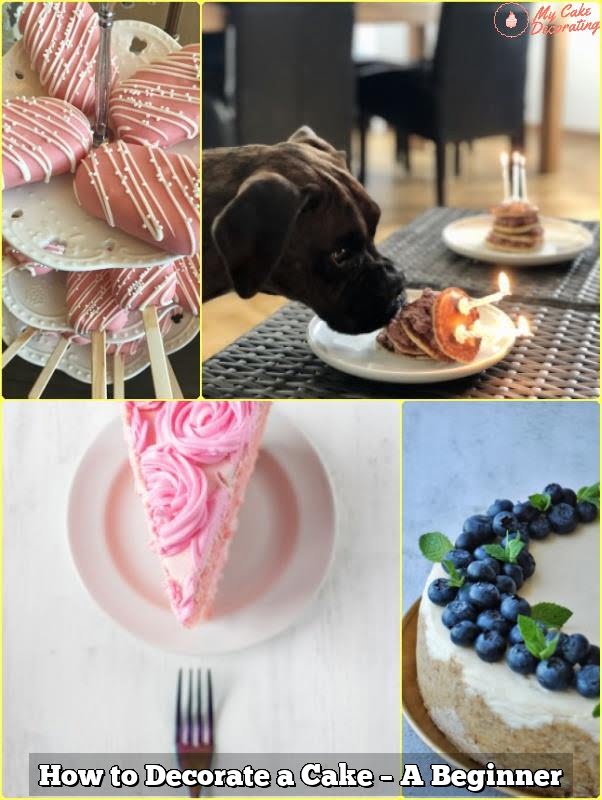Decorating a Christmas cake can be intimidating for beginners. The pressure to create a beautiful masterpiece that matches the festive spirit can feel overwhelming. However, starting with simple techniques is essential for building confidence and ensuring success.
In this article, we will explore everything you need to know about beginner simple Christmas cake decorating. From essential tools and choosing the right cake recipe to step-by-step tutorials and troubleshooting common issues, we will guide you through the process and help you create a stunning holiday centerpiece.
Starting with simple techniques is crucial because it allows beginners to hone their skills without feeling overwhelmed. By mastering basic tools and understanding fundamental cake decorating concepts, even those new to the craft can produce impressive results. As you progress and gain confidence, you’ll be amazed by how quickly your skills develop, and soon enough, creating a beautifully decorated Christmas cake will become second nature.
The excitement of creating a beautiful masterpiece cannot be understated. There is something incredibly satisfying about seeing your creative vision come to life on top of a delicious homemade cake. Whether it’s adding festive designs or mastering more intricate techniques like fondant application, decorating a Christmas cake allows for self-expression and artistry in the kitchen. So roll up your sleeves, grab your piping bags, and let’s dive into the world of beginner simple Christmas cake decorating.
Essential Tools for Beginners
Decorating a Christmas cake can be an intimidating task, especially for beginners. The pressure to create a beautiful masterpiece that matches the festive spirit can make the process overwhelming. However, with the right tools and some basic techniques, even beginners can achieve stunning results. In this section, we will discuss the essential tools that every beginner needs to have in their cake decorating toolbox.
List of Basic Tools
Before diving into cake decorating, it’s important to have a few basic tools on hand. These include:
- Offset spatula: This tool is used for spreading frosting and creating smooth finishes on cakes.
- Piping bags and tips: Piping bags allow you to pipe different designs or patterns onto your cake. Start with a set of basic tips like round, star, and leaf-shaped tips.
- Bench scraper: A bench scraper helps in achieving straight sides and clean edges on your cake.
- Turntable: A turntable makes it easier to rotate the cake while decorating, giving you better control over your design.
- Angled palette knife: This knife is useful for smoothing buttercream or applying fillings evenly between layers.
- Cake board or stand: A sturdy base is important for displaying and transporting your decorated Christmas cake.
Tips for Finding Affordable Tools
As a beginner, it’s understandable if you don’t want to spend a fortune on specialized cake decorating tools. There are several affordable options available. Check local craft stores for basic kits or individual items that suit your needs. Additionally, you can find great deals online from specialty baking supply websites or online marketplaces like Amazon.
Importance of Quality Tools
While affordability is essential for beginners, investing in quality tools will pay off in the long run. High-quality tools are often more durable and efficient than their cheaper counterparts. They provide better control over the decorating process and produce more professional-looking results. As you advance in your cake decorating skills, you may find it beneficial to gradually upgrade your tools to higher quality options.
Having the right tools is the foundation for successful Christmas cake decorating. With these essentials in hand, beginners can confidently embark on their cake decorating journey and create stunning designs that will impress family and friends.
Choosing the Right Cake Recipe
Choosing the right cake recipe is a crucial step in beginner simple Christmas cake decorating. The flavor of the cake can set the tone for the entire design, so it’s important to select a recipe that not only tastes delicious but also works well for decorating.
When choosing a cake recipe suitable for beginners, it’s best to opt for one that is straightforward and doesn’t require complex techniques. Classic flavors like vanilla, chocolate, and red velvet are popular choices for Christmas cakes and work well for beginners. These recipes usually have clear instructions and are forgiving when it comes to decorating mistakes.
In addition to the flavor, it’s essential to consider the texture and sturdiness of the cake. A moist and dense cake will hold up better during the decorating process and provide a stable canvas for your designs. Avoid recipes that are too light or delicate, as they may crumble or collapse under the weight of fondant or heavy decorations.
To ensure success with your chosen recipe, be sure to follow all measurements and instructions accurately. Baking is a precise science, so making any adjustments without experience can lead to unpredictable results. It’s also helpful to read reviews or recommendations from other bakers who have tried the recipe before.
Remember, don’t be discouraged if your first attempt doesn’t turn out exactly as planned. Cake decorating takes practice, and each try is an opportunity to learn something new. With patience and perseverance, you’ll soon be creating beautifully decorated Christmas cakes that will impress friends and family alike.
Preparing the Cake
When it comes to decorating a Christmas cake, proper preparation of the cake itself is crucial. This section will provide step-by-step instructions on how to properly level and torte a cake, as well as tips for achieving a smooth and even crumb coat. Additionally, we will emphasize the importance of chilling the cake before decorating to make the process easier and more manageable.
Leveling and Torting:
Before you can begin decorating your Christmas cake, it’s important to ensure that it has a level surface. This can be achieved by using a long serrated knife or a cake leveler to carefully remove any uneven domes from the top of the baked cake. Once leveled, you may choose to create multiple layers by torting the cake horizontally.
To do this, simply insert your knife horizontally into the center of the cooled cake and use a gentle sawing motion to cut it in half. Continue this process until you have achieved your desired number of layers.
Crumb Coat:
After leveling and torting your cake, it’s time for the crumb coat. The crumb coat is a thin layer of frosting that helps seal in any loose crumbs before applying the final layer of frosting or fondant. To achieve a smooth and even crumb coat, use an offset spatula or a bench scraper to apply a thin layer of frosting around and on top of the leveled and torted cake.
Make sure to cover all exposed sides of the cake while keeping an eye out for any visible crumbs that may have surfaced. Once applied, refrigerate the cake for at least 15 minutes or until firm.
Chilling the Cake:
Chilling your decorated Christmas cake is essential as it allows for easier handling during the decorating process. After applying the crumb coat, place your cake in the refrigerator for at least 30 minutes or until firm to touch. Chilling not only helps prevent any potential damage to your decorated surface but also allows the frosting or fondant to set, creating a stable base for further decorations.
If you’re planning to use fondant, chilling the crumb-coated cake is particularly important as it helps to prevent any sagging or stretching of the fondant when it is applied. By taking this extra step, you’ll be well-prepared for the next phase of decorating your Christmas cake.
Taking the time to properly prepare your cake before decorating will yield professional-looking results. With level layers, a crumb coat that seals in crumbs, and a chilled cake that is firm and easy to handle, you will be able to confidently move on to adding the beautiful designs and finishing touches that will transform your cake into a festive holiday centerpiece.
Simple Christmas Designs
For beginners looking to decorate their Christmas cake, there are plenty of simple and easy designs that can create a festive and beautiful centerpiece. One classic design that is perfect for beginners is the candy cane pattern. This pattern involves alternating red and white stripes to mimic the iconic look of a candy cane.
To create this design, start by applying a thin layer of buttercream icing or fondant on your chilled cake. Then, use a piping bag fitted with a small round tip to pipe vertical lines with red icing on one side of the cake. Next, fill another piping bag fitted with the same round tip with white icing and pipe vertical lines on the other side of the cake.
Once you have created the base stripes, use a small offset spatula or a toothpick to gently drag horizontal lines across the vertical stripes, creating the candy cane effect. Repeat this process until you have covered the entire cake.
Another simple yet festive design for beginners involves using a star-shaped piping tip to create mini Christmas trees all over your cake. Start by tinting your buttercream icing in various shades of green. Fill a piping bag fitted with a star-shaped piping tip with one shade of green icing and pipe small rosettes all over the cake.
Next, switch to another shade of green and repeat this process until you have created multiple layers of different shades. Continue until you have filled up the entire surface of your cake with these mini Christmas trees.
These simple designs are great starting points for beginners who want to create stunning Christmas cakes without feeling overwhelmed. Remember to take your time and enjoy the process, as decorating a Christmas cake can be an exciting and fulfilling experience.
| Design | Description |
|---|---|
| Candy Cane Pattern | Create alternating red and white stripes using buttercream or fondant icing |
| Mini Christmas Trees | Pipe small rosettes in multiple shades of green to create a forest of trees |
Decorating with Fondant
Fondant is a versatile and popular medium used in cake decorating. It offers a smooth and flawless finish, making it perfect for creating elaborate designs. If you’re a beginner looking to take your Christmas cake decoration to the next level, incorporating fondant can be a great way to achieve professional-looking results.
To start decorating with fondant, you’ll need a few essential tools:
- Rolling pin: A non-stick rolling pin will help you roll out the fondant smoothly without sticking.
- Fondant smoother: This tool will help you achieve a seamless and polished finish on your cake.
- Fondant mat: A silicone mat or non-stick surface will prevent the fondant from sticking while rolling it out.
- Cornstarch or powdered sugar: These can be used to dust your work surface and prevent the fondant from sticking.
Here is a step-by-step guide on how to cover a cake with fondant:
- Prepare your cake by applying a thin layer of buttercream or jam as an adhesive for the fondant.
- Dust your work surface with cornstarch or powdered sugar to prevent sticking.
- Roll out the fondant using your rolling pin until it is large enough to cover the entire cake.
- Gently lift the rolled fondant using your hands or by wrapping it around the rolling pin, and place it over the cake.
- Smooth out any air bubbles or wrinkles using a fondant smoother, starting from the top and working your way down the sides of the cake.
- Trim off any excess fondant at the bottom using a sharp knife or pizza cutter.
Achieving a smooth and professional-looking finish requires practice and patience. Here are some tips to keep in mind:
- Knead the fondant well before rolling it out to ensure it becomes pliable and easy to work with.
- Work quickly when covering the cake with fondant, as it can dry out and crack if left exposed to air for too long.
- If you encounter cracks or tears while smoothing the fondant, you can fix them by gently pressing the cracked area together with your fingers or using a small amount of water as an adhesive.
Once you have successfully covered your cake with fondant, you can start adding additional decorations such as cut-out shapes, flowers, or embossed designs. Fondant also serves as a great canvas for painting or applying edible glitter for a festive touch.
By following these steps and practicing your fondant techniques, you’ll be able to create beautifully decorated Christmas cakes that are sure to impress your family and friends. Don’t be afraid to experiment with different colors and designs to let your creativity shine through.
Adding Edible Decorations
When it comes to decorating a Christmas cake, adding edible decorations is a fun and creative way to enhance its festive appeal. For beginners, it’s important to start with simple edible decorations that are easy to make but still have a stunning effect. Here are some ideas and tutorials for adding edible decorations to your Christmas cake:
- Creating Edible Holly Leaves and Berries: One classic Christmas decoration that can easily be made from edible ingredients is holly leaves and berries. To create realistic-looking holly leaves, you can use green fondant or gum paste. Roll out the fondant or gum paste thinly and cut out leaf shapes using leaf cutters or freehand with a knife.
Use a veining tool or toothpick to create veins on the leaves for added realism. For the berries, use red fondant or gum paste rolled into small balls. Attach the berries onto the leaves using a small amount of water or edible glue. - Using Edible Glitter or Sprinkles: Edible glitter and sprinkles are an easy way to add sparkle and festive flair to your Christmas cake. There are many options available, such as gold, silver, or colored edible glitter, as well as various shaped sprinkles like stars, snowflakes, or Christmas trees.
To apply edible glitter, brush a small amount onto dried icing or fondant using a clean paintbrush. Sprinkles can be pressed into buttercream icing while it is still moist on the cake. - Personalizing with Decorative Cake Toppers: Another way to add an extra special touch to your decorated Christmas cake is by using decorative cake toppers that are both beautiful and edible. These can include sugar flowers, themed figurines like Santa Claus or reindeer, or molded chocolate decorations in various shapes and designs.
Remember that while adding these edible decorations can enhance the visual appeal of your Christmas cake, it’s important to ensure that they are securely attached and not adding excessive weight to the cake. Take care when transporting the cake, especially if you’re planning on gifting it or bringing it to a holiday event.
With these simple edible decorations, you can easily elevate the overall appearance of your Christmas cake and impress your family and friends with your creativity. Don’t be afraid to experiment and try out different ideas – decorating a Christmas cake should be a joyful and enjoyable process.
Troubleshooting Common Issues
Cake decorating can be a challenging task, especially for beginners. However, with the right techniques and a little troubleshooting, you can overcome common issues that may arise during the process. In this section, we will address some of these issues and provide solutions to help you create a beautiful Christmas cake.
- Air Bubbles in Fondant: One common problem when working with fondant is the formation of air bubbles that can ruin the smooth finish of your cake. To avoid this issue, make sure to knead your fondant thoroughly to remove any trapped air.
Additionally, roll out your fondant to an even thickness using a rolling pin and dust your work surface with powdered sugar or cornstarch to prevent sticking. If air bubbles appear while covering the cake, gently poke them with a pin or small knife and smooth out the fondant. - Cracking or Tearing Fondant: Another issue that beginners often encounter is cracking or tearing of fondant when covering their cake. To prevent this from happening, ensure that your cake is properly chilled before applying the fondant as it helps firm up the buttercream underneath and provides stability.
When rolling out the fondant, take care not to stretch it too much which can cause it to tear. Slowly drape the rolled-out fondant over the cake, starting from one side and gradually smoothing it down as you go. - Uneven Crumb Coat: A crumb coat is essential for achieving a neat and professional-looking finish on your cake. If you find that your crumb coat is uneven or has crumbs showing through, try applying a thinner layer of icing initially and focusing on smoothing it out before adding another layer. Using a bench scraper or offset spatula, gently scrape off any excess icing to create an even surface.
Remember that practice makes perfect when it comes to cake decorating, so don’t be discouraged if you encounter any issues along the way. Each troubleshooting moment is an opportunity to learn and improve your skills. By following these tips, you will be able to overcome common problems and create a stunning Christmas cake that will impress your friends and family.
Final Touches and Presentation
After all the hard work of decorating your Christmas cake, it’s time to add those final touches that will elevate your creation and make it truly stand out. These finishing touches can take your cake from ordinary to extraordinary, and they are a great way to showcase your creativity and attention to detail.
One simple yet effective way to enhance the look of your Christmas cake is by adding texture. You can achieve this by using different piping techniques or by incorporating decorative elements such as ribbons or bows. For example, you could pipe a border along the top edge of the cake using a star-shaped piping tip, creating a beautiful and festive effect. Adding edible flowers or leaves made from fondant can also give your cake an elegant touch.
When it comes to presentation, think about how you want to display your decorated Christmas cake. You could place it on a decorative cake stand or tray, surrounded by greenery or other holiday-themed decorations. Consider adding some fresh berries or sprigs of holly as garnish around the base of the cake for an extra festive touch. Don’t forget about lighting – soft candlelight can create a warm and intimate atmosphere that complements the beauty of your creation.
Once you have put so much effort into decorating your Christmas cake, you’ll want to ensure that it stays fresh and delicious for as long as possible. If you’re not planning on serving it right away, store it properly in an airtight container or cover it with plastic wrap to prevent drying out. It’s also recommended to keep it in a cool place away from direct sunlight to preserve its appearance.
Conclusion
In conclusion, decorating a Christmas cake may seem intimidating for beginners, but starting with simple techniques is essential to build confidence and create a beautiful masterpiece. By investing in basic tools and finding them at an affordable price, beginners can get started without breaking the bank. It’s important to prioritize quality tools that will last, as they can make all the difference in achieving professional-looking results.
Choosing the right cake recipe is crucial for successful decorating. Opt for flavors that work well for Christmas and select a recipe suitable for beginners. A moist and sturdy cake is key to supporting the decorations and ensuring a delicious final product. Properly preparing the cake by leveling, torting, and achieving a smooth crumb coat is essential. Chilling the cake before decorating helps to make the process easier and more manageable.
Simple Christmas designs are perfect for beginners. Try creating classic candy cane patterns using piping techniques or use star-shaped piping tips to achieve a festive effect. Fondant can be intimidating, but it opens up a world of possibilities in cake decorating. Follow step-by-step guides to cover your cake smoothly with fondant and achieve a professional finish.
Edible decorations add extra visual appeal to your Christmas cake. Create edible holly leaves and berries or incorporate edible glitter or sprinkles for a touch of magic. It’s important to troubleshoot common issues that may arise during the decorating process, such as air bubbles in fondant or other mishaps. Embrace mistakes as creative opportunities and learn how to fix them.
Final touches and presentation elevate your decorated Christmas cake. Add decorative accents like ribbon, fresh flowers, or ornaments to enhance its beauty. Consider displaying the cake on a festive platter or stand for an appealing presentation. When storing the decorated cake, make sure it is properly covered or stored in an airtight container to preserve freshness.
Frequently Asked Questions
What does a beginner need for cake decorating?
As a beginner in cake decorating, there are a few essential items that you will need. Firstly, a good quality set of decorating tools is important, which typically includes icing bags, piping tips, and spatulas. These tools will help you achieve different techniques and designs on your cake.
Additionally, it’s crucial to have a turntable that allows you to easily rotate the cake while decorating. Other essentials include a cake smoother or scraper for achieving clean lines and an offset spatula for spreading icing smoothly. Finally, invest in food coloring gels or powders to add vibrant colors to your decorations.
How many weeks before Christmas should you make a Christmas cake?
It is recommended to make a Christmas cake around 4-6 weeks before Christmas Day. This duration allows ample time for the flavors to develop and mature properly.
By making the cake well in advance, you give it enough time for the ingredients like fruits and nuts to soak up all the flavors from alcohol or fruit juice used in the recipe. This results in a rich and moist fruitcake with intense flavors once it’s served during the festive season.
How do you ice a Christmas cake for beginners?
Icing a Christmas cake can be intimidating for beginners, but with some simple steps, you can create a beautiful finish. Start by preparing your marzipan layer as a base for icing by rolling out marzipan thinly and covering the entire cake evenly. Once the marzipan has dried slightly, roll out ready-to-roll fondant icing and drape it over the marzipan-covered cake gently, smoothing it down with your hands or using a smoother tool to remove any air bubbles or creases.
Trim excess icing from the bottom of the cake using a sharp knife if needed. After this, you can decorate your Christmas cake further by adding royal icing piped designs or fondant decorations such as stars, snowflakes, or holly leaves – sky’s the limit! Practice patience and take your time working with royal icing or fondant until you achieve the desired look.

Welcome to my blog about home and family. This blog is a place where I will share my thoughts, ideas, and experiences related to these important topics. I am a stay-at-home mom with two young children. I hope you enjoy reading it! and may find some helpful tips and ideas that will make your home and family life even better!





